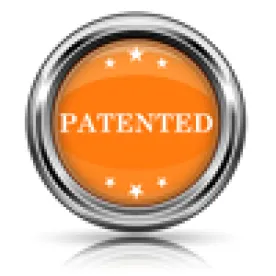Takeaway: The publication of a court’s decision in the Federal Supplement reporter does not make the underlying litigation documents sufficiently publicly accessible to qualify them as printed publications for the purposes of prior art.
In its Decision, the Board decided to institute inter partes review of only claims 1-5 and 8 of the ’501 patent on one ground of unpatentability and denied institution as to every other asserted ground and challenged claim. The ’501 patent “relates to a play gym which suspends an object over a mat within a play yard.”
The Board first addressed the question of claim construction, noting that unexpired patent claims are given their “broadest reasonable construction in light of the Specification of the patent.” The Board found it necessary to construe the terms “play yard” and “play gym.” Patent Owner argued that the terms should be limited “to be used by small children,” but the Board disagreed. In particular, the Board noted that Patent Owner’s proposed construction was “a statement of intended use, rather than a definition of a structure.” Further, the Board found that there were no size limitations present in the claims, and construed “play gym” to mean “a structure or apparatus which is capable of suspending an object over a defined area.” “Play yard” was similarly construed so as not to be limited in its size.
With respect to the terms “couple” (and its variations) and “connector,” the Board agreed with Patent Owner’s proposed constructions.
The Board then turned to the asserted grounds of unpatentability. Addressing the alleged anticipation of claims 14, 19, and 20 by Dole, the Board agreed with Patent Owner’s arguments that the reference failed to disclose a particular claim limitation and denied institution of this ground. Next, the Board addressed the alleged anticipation of claims 14 and 19 by Rupert. The Board found Rupert’s disclosure to be similar to that of Dole, and was again persuaded by Patent Owner’s arguments that a claim limitation was lacking in the disclosure of Rupert.
The Board then discussed the asserted grounds of obviousness. First turning to the only partially instituted ground, obviousness of claims 1-13, 15, 16, and 18 over Dole and Graco, Patent Owner argued that because both references were considered during prosecution, institution should be denied solely on this basis. The Board declined to exercise in its discretion to not institute on this basis, noting that Patent Owner did not point to evidence of any substantial prosecution concerning these references. Patent Owner also argued that Dole was nonanalogous art in that the ’501 patent relates to an infant play gym whereas Dole relates to collapsible shelters. The Board disagreed, noting that the similarities between the structures of Dole and the ’501 patent were “remarkable.” The Board, citing Supreme Court case law, also found the fields of endeavor to be “somewhat broader than laid out by the Patent Owner,” and that “Dole would logically commend itself to one presented with the ’501 patent’s solution to the problem of suspending an object in a play yard.”
Regarding the substance of the ground based on Dole and Graco, the Board was persuaded by Petitioner as to claims 1-5 and 8. However, the Board disagreed with regard to claims 6, 7, 9-13, 15, 16, and 18, finding that Dole and Graco failed to disclose particular claim limitations.
The Board next addressed the ground of obviousness of claims over Tyco and Graco. Patent Owner persuasively argued that Petitioner failed to establish that Tyco is a printed publication. Tyco was a collection of litigation documents including a Declaration, an Answer to a Complaint, and an Affidavit, all related to the product at issue in a litigation. Petitioner alleged that the documents became available as prior art as a printed publication by virtue of the publication of a decision in the Tyco litigation in the Federal Supplement. Citing Federal Circuit case law, the Board stated that public accessibility of a document requires a showing that “(1) the ‘document has been disseminated’; or (2) ‘otherwise made available to the extent that persons interested and ordinarily skilled in the subject matter or art exercising reasonable diligence, can locate it and recognize and comprehend therefrom the essentials of the claimed invention without need of further research or experimentation.’” In this instance, the Board found that Petitioner did not establish that the underlying collection of litigation documents were sufficiently accessible, even when a decision was published in the Federal Supplement. Thus, Tyco did not qualify as prior art, and the Board denied the remaining grounds based on Tyco.
Artsana USA, Inc. v. Kolcraft Enterprises, Inc., IPR2014-01053
Paper 14: Decision on Institution of Inter Partes Review
Dated: December 19, 2014
Patent: 8,388,501 B2
Before: James T. Moore, Hyun J. Jung, and Barry L. Grossman
Written by: Moore
Related Proceeding: Kolcraft Enterprises, Inc. v. Artsana USA, Inc., No. 1:13-cv-04863 (N.D. Ill.)



 />i
/>i

